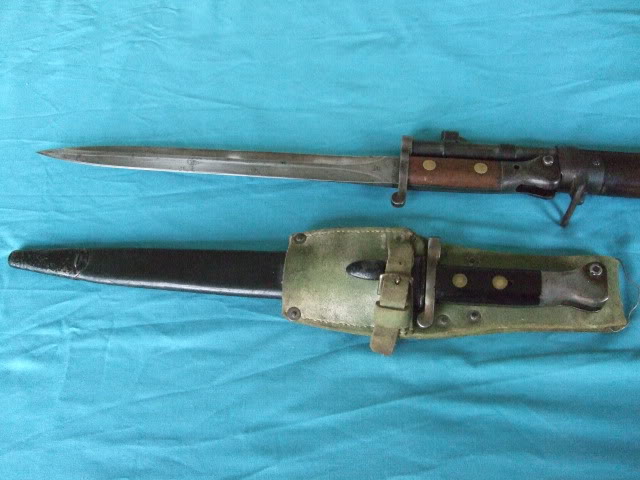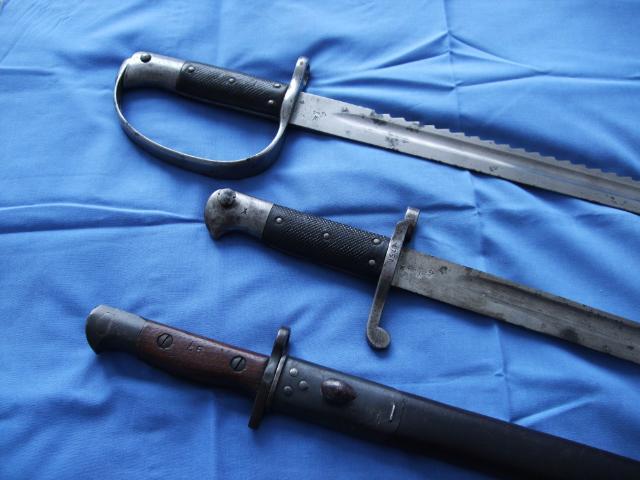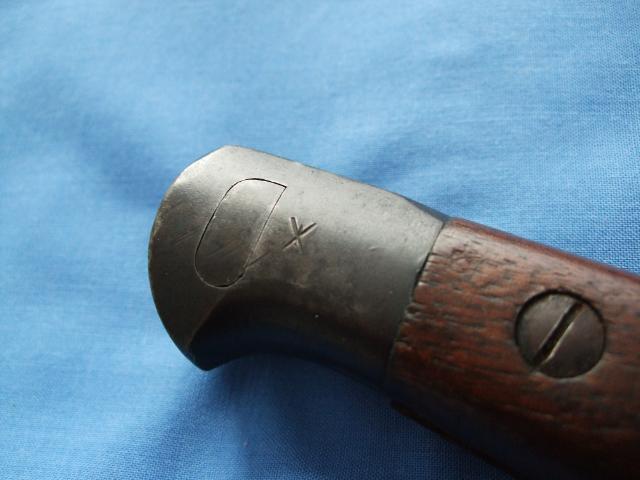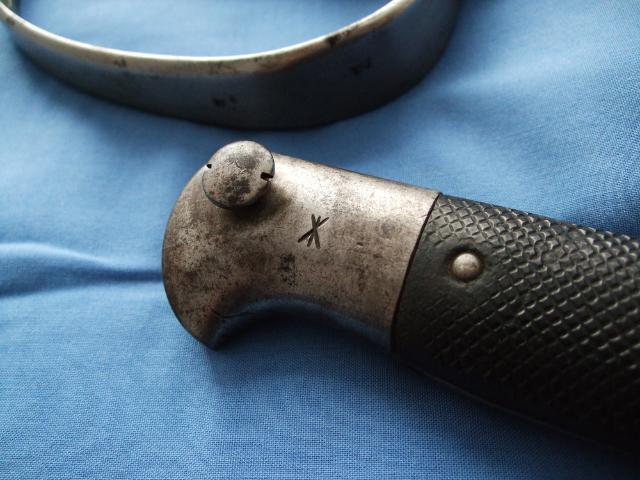I have followed the sold out of service (SOS) mark part of this thread with a bit of interest and earlier this week, with an hour to spare, re-read the old 1944 Equipment Regulations (the ER's) relating to this back to back SOS arrow mark and it's application. These ER's of the era, as they do today (although they're called something different now of course.......), apply across the board, to everyone and at all levels. I can't find anywhere, where equiment sold or supplied to another Army or nation will be marked,
As a litttle example, can you imagine
New Zealand
say, purchasing 6,000 bayonets from
Britain
in 1925. If they were new, they'd come straight from a factory as a Wilkinson to NZ Government private deal. The factory would mark them with whatever they wanted - after all, that's business. If they came as second hand from a Government Ordnance Depot, can you just imagine a storman sitting there with a stamp, cancelling out EVERY previous stamp into a SOS mark................ No, I can't either .
During the everyday run of war, Ordnance stockpiles are pooled.
The ER's do specify exactly when the SOS mark is applied, where and by whom. And in general, this mark applies to what were at the time called 'valuable, attractive and accountable stores' or what we still call today 'V&A'. To be honest, bayonets aren't high on the list of Army V&A stores are they.............?
To be honest, if a soldier today wanted to keep a bayonet or a, say, wristwatch, then he'd 'loose' it during the course of his duties, take the consequences, pay for it and that'd be that. But he'd always have at the back of his mind that stolen property NEVER belongs to the person who stole it. It ALWAYS belongs to the loser. That's be a good reason for him to mark it with the back to back arrow AND why the old ER's mention what to look for if it looks suspect.
But SOS marking every bit of kit sold to another Army................
marked.















 Register To Reply
Register To Reply










